There were black slave owners during the slavery in America
THE BLACK SLAVE OWNERS
The majority of
black slave owners were members of the mulatto class, and in some cases were
the sons and daughters of white slave masters. Many of the mulatto slave owners
separated themselves from the masses of black people and attempted to establish
a caste system based on color, wealth, and free status.
According to Martin Delany, the colored community of Charleston City clung to the assumptions of the superiority of white blood and brown skin complexion.
These mulattoes of the old free Black elite did not attend church with the dark-skinned blacks of Charleston City. They not only formed congregations that excluded freedmen of dark complexion, but they only married among other mulattoes to "keep the color in the family."
Large numbers of
free Blacks owned black slaves in numbers disproportionate to their
representation in society. According to the federal census of 1830, free blacks
owned more than 10,000 slaves in Louisiana, Maryland, South Carolina, and
Virginia.
The majority of black slave-owners lived in Louisiana and planted sugar cane. Slaveholding among the mulatto class in South Carolina was widespread according to the first census of 1790, which revealed that 36 out of 102, or 35.2 percent of the free Blackheads of families held slaves in Charleston City.
By 1800 one out of
every three free black recorded owning slave property. Between 1820 and 1840
the percentage of slaveholding heads of family ranged from 72.1 to 77.7
percent, however, by 1850 the percentage fell to 42.3 percent. According to the
U.S. Census report in 1860 only a small minority of whites owned slaves.
Out of a population
of 27 million whites-only eight million lived in the South and out of this
population fewer than 385,000 owned slaves. In short, the total white
population own about 1.4, while the southern white population own about 4.8
enslaved Africans. On the other hand, the black population in 1860 was 4.5
million, with about 500,000 living in the South.
Of the blacks residing in the South, 261,988 were not slaves. Of this number, 10,689 lived in New Orleans. In New Orleans over 3,000 free blacks owned slaves, about 28 percent of the free Black population in the city.
Year Owners Slaves 1790 49 277 1800 36 315 1810 17 143 1820 206 1,030 1830 407 2,195 1840 402 2,001 1850 266 1,087 1860 137 544 The following chart shows the free Black slave owners and their slaves in Charleston, 1790-1860.
In 1860 there were at least six
African Americans in Louisiana owned 65 or more slaves. The largest number,
152 slaves, were owned by the widow C. Richards and her son P.C. Richards, who
owned a large sugar cane plantation.
Another Black slave magnate in Louisiana with over 100 slaves was Antoine Dubuclet, a sugar planter whose estate was valued at $264, 000. In North Carolina, 69 free Blacks were slave owners. The majority of urban black slave owners were women.
In 1820,
free black women represented 68 percent of heads of households in the North and
70 percent of slaveholding heads of colored households in the South.
The large percentage of black women, slave owners are explained by manumission by their white fathers or inheritance from their white fathers or husbands.
Black women were the majority of slaves, emancipated by white slave-owning men with whom they had sexual relations. Thirty-three percent of all the recorded colonial manumissions were mulatto children and 75 percent of all adult manumissions were females.
THE FIRST BLACK SLAVE OWNER--AND THE ORIGINS OF SLAVERY
Euro-Americans arrived in Jamestown Virginia in 1607, and the first large group of Africans arrived in 1619. However, House of Burgess records shows that Africans were already in the colony before 1619. John Rolfe provides us with an eyewitness account of this first group.
African-Americans under bondage in America
"About the last of August [1619] came a Dutchman of Warre that sold us twenty negers." Among them was one called Antonio from Angola. Later, we find that Antonio becomes Anthony Johnson. Other listed was Angelo, a Negro woman," and John Pedro, a neger aged 30."
The census of
1624-25 showed that there were twenty-three Africans living in Jamestown,
Virginia was listed as a servant and not a slave. Africans coming to Jamestown between
1630 and 1640 could expect to be freed after serving their indented period of
time about seven to ten years for Africans and Indians.
At this time there was no system of perpetual servitude or slave for life, but the system was rapidly evolving. Between 1640 and 1660 slavery was becoming a customary reality. In 1640 three servants of Hugh Gwyn, "a Dutchman called Victor, a Scotchman named James Gregory, and John Punch, a negro," having run away from their master were overtaken in Maryland and brought back to stand trial for the misbehavior.
The verdict of the court would change the system of
indentured servitude and set the system in transition to plantation slavery.
The court ruled that the three servants shall receive punishment by whipping
and have "thirty stripes apiece."
The court ordered that the Dutchman and the Scotchman should "first serve out their times with their master according to their Indentures and one whole year apiece after the time of their service is expired" and that they shall be served the colony for three years. "The third being a negro. . .shall serve his said master or his assigns for the time of his natural life."
This marks the first time that race and color become a factor in the status of both black and
white indentured servants. In other words, the system is rapidly evolving to
meet the new demand for cheap labor, and race is slowly being used as the
justification for the enslavement of peoples of African origins.
Between 1640 and 1660 Africans were going to court and suing for their freedom. In 1644 Thomas Bushrod, the assignee of Colonel William Smith, sold a mulatto boy named Manuel "as a slave for-Ever, but in September 1644 the said the servant was by the Assembly adjudged no Slave and but to as other Christian servants do and were freed in September 1665."
A similar ruling is
found in the case of Robinson. In 1649, there were about three hundred Africans in
the colony and an increasing mulatto population. African and European
indentured servants' offsprings were increasing and considered alarming in
regard to the status of the mulatto. That is a system was evolving based on
being either black or white.
Africans who entered Jamestown between 1620 to 1650 could expect to be freed after serving their indented time and given 50 to 250 acres of land, hogs, cows and seeds and the right to import both white and black indentured servants.
For a brief period in American history between 1630 to 1670, a number of Africans had become freedmen and owned indented white servants.
The act of 1670
forbidden free Negroes to own Christian servants but conceded the right to own
servants of their own race. By 1670, it was becoming customary to hold African
servants as "slaves for life," and by 1681 what was
customary became law.
The first laws
regarding the status of Africans recognized the free blacks. The first status
was passed in 1662 provided that the status of offspring should follow that
status of the mother.
What this law did
was to allow white fathers to enslave their own children and free women of
color to perpetuate the free black population. In other words, it also
guaranteed freed black females the right to extend their free status to their
children.
Black women who have served their indentured period would not provide the foundation for the free black community. Many of those Africans who were grandfathered in the new system not only became the free black community, but this is the origins of Black slave owners.
The act of 1668 dealing with the condition of the colored population-related solely to the tax obligations of a free black woman, and two years later an act guaranteed to "negroes manumitted or otherwise free" the right to own servants of their own race and expressly denied to them the right to purchase or to own white or "Christian servants."
This law recognized and sanctioned slavery, but also guaranteed the continuity of the free black class, who were now largely mulatto.
ANTHONY JOHNSON
Black slave owners
have not been studied as a part of American history, rather as a datum to
American history, and yet slavery as a perpetual institution is legalized based
on a case brought before the House of Burgess by an African, who had been
indentured in Jamestown, Virginia 1621 and was known as Antonio the
Negro according to the earliest records.
He later Anglicized his name to Anthony. Anthony Johnson was believed to be the first Black to set foot on Virginia soil. He was the first black indentured servant, the first free black, and the first to establish the first black community, first black landowner, first black slave owner, and the first person based on his court case to establish slavery legally in North America. One could argue that he was the founder of slavery in Virginia.
Anthony Johnson arrived in Jamestown, Virginia in 1621. In 1623, Antoney[sic] and Isabella married. The next year they were the proud parents of William. William is believed to be the first African American born in British America.
During his first years in
North America, he escaped death in an Indian attack on Jamestown. During the
following year, Africans and people of color were a small minority in the
Virginia colony. The census of 1625 reported only twenty-three Africans living
in the colony out of a total of 1,275 white people and indigenous Africans.
By 1649 the total
black population was only 300 out of a total of 18,500 whites. In 1635
Johnson's master, Nathaniel Littleton finally released him. As the custom was
he received a 250-acre plantation in 1651 under the "headright
system" by which the colonial government encouraged population
growth by awarding fifty acres of land for every new servant a settler brought
to Virginia. He became the master of both black and white servants.
Anthony Johnson's
plantation was located on the neck of land between two creeks that flowed into
the Pungoteague River in Northampton County. A few years later, his relatives,
John and Richard Johnson also acquired land in this area. John brought eleven
servants to the colony and received 550 acres, and Richard brought two and
received 100 acres.
In 1654 Anthony Johnson went to court and sued his white neighbor for keeping his black servant John Casor. Casor claimed that Johnson "had kept him his serv [an] t seven years longer than he should or ought. Johnson who the courts described as an "old Negro," claimed that he was entitled to "ye Negro [Casor] for his life." Johnson realized that if he continued and persisted in his suit, Casor could win damages against him.
Blacks enslavement in the United States of America
So, Johnson brought suit against his white neighbor Robert Parker, whom Johnson charged had detained Casor "under pretense [that] the s[ai]d John Casor as a freeman." The courts now ruled in his favor and John Casor was returned to him and Parker had to pay the court costs. This case establishes perpetual servitude in North America, and it is ironic that the case was brought to the court by an African who had arrived from Angola in 1621.
Slavery was
established in 1654 when Anthony Johnson, Northampton County, convinced the court that he was entitled to the lifetime service of John Casor; this was the
first judicial approval of life servitude, except as a punishment for a crime.
Anthony Johnson lived on his plantation surrounded by his white neighbors. He had entered a system not based on slavery, but indentured servitude. There were many Anthony Johnson's in America, who never spent a day in slavery but were owners of slaves.
By Joseph E. Holloway

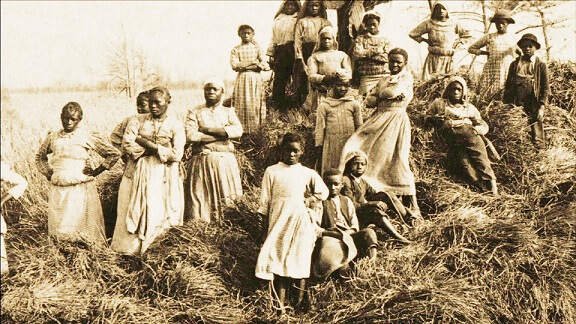
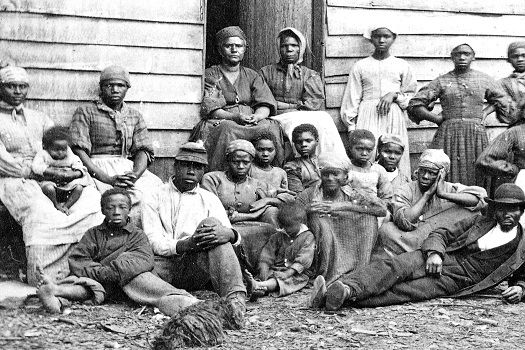
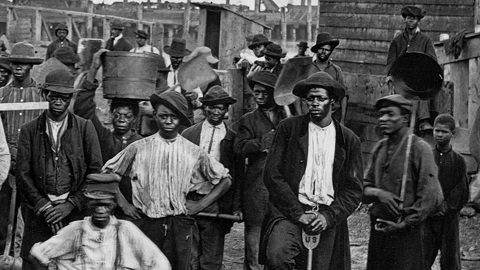
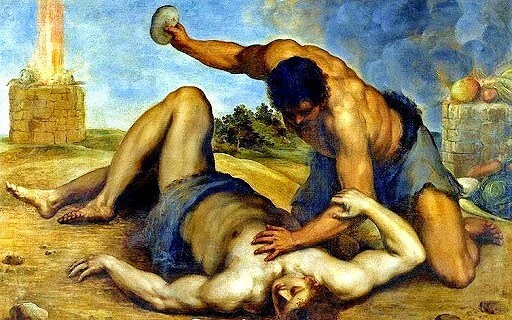

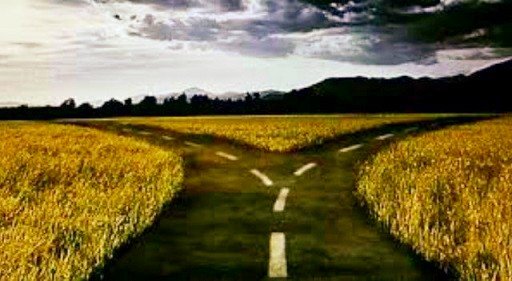


No comments:
Post a Comment